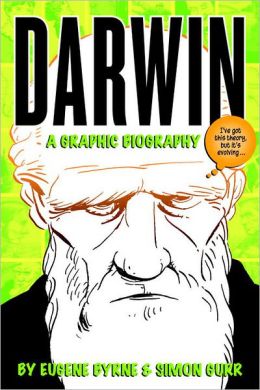
In part 1, after a cryptic reference to The Mariner’s Mirror, I was discussing how, while writing a review of Eugene Byrne and Simon Gurr’s excellent Darwin: A Graphic Biography for Evolution: Education and Outreach, I became preoccupied with two questions of underwhelming historical significance. Did Captain FitzRoy of the Beagle have a mustache? And if not, why might Gurr—whose “depictions of historical figures are clearly based on a study of contemporary portraits and photographs,” as I approvingly wrote in my review—have thought otherwise?
Answering the first of these questions was where The Mariner’s Mirror became relevant. A bibliography of literature about the Royal Navy until 1815 pointed me to a 1975 article in The Mariner’s Mirror with the jokey title “RN Hirsute History,” describing it as summarizing the tonsorial regulations for officers. While Darwin’s voyage on the Beagle was after 1815, of course, I figured that the regulations might still have been in force. (And indeed they were, until whiskers became military fashion during the Crimean War, and the regulations were altered to permit beards and mustaches—but only together.)
It isn’t exactly easy to find back issues of The Mariner’s Mirror in your local library, even if you patiently explain that it’s the quarterly academic journal of the Society for Nautical Research in the United Kingdom. I had to make a special trip to Sacramento to photocopy “RN Hirsute History”—as well as a rebuttal, which provided a list of “isolated instances” of officers in the Royal Navy who were recorded as sporting mustaches and beards under various circumstances, none of which seemed to apply. Moreover, FitzRoy, a notorious martinet, is unlikely to have flouted the regulations.
Why would Gurr have depicted FitzRoy with a mustache? Images, whether portraits or photographs, of him throughout his life generally show him to be clean-shaven. But there is, I noticed in flipping the pages of various Darwiniana in my office, a clear exception. In my monster footnote, I mentioned “a commonly reproduced lithograph, sometimes captioned as showing FitzRoy ‘in his late twenties’ (Moorehead 1969, p. 11) or ‘as Darwin first knew him’ (Nichols 2003, p. 20), which indeed seems to show FitzRoy with a wispy mustache.”
In a blog post (“In Search of a Beard”) a while back, I described my efforts in helping the Darwin Correspondence Project identify a caricature of Darwin that he described in one of his letters. Recondite? Recherché? Child’s play, compared to the mustached FitzRoy picture. I still don’t know who engraved the lithograph, but (as the monster footnote says) “the National Library of New Zealand, which holds it, suggests…that it is based on a portrait in ink and wash…by Philip Gidley King, who sailed as a midshipman on the Beagle with FitzRoy and Darwin.”
And when you look at King’s portrait, or at a contemporaneous pencil sketch by his father Phillip Parker King (who supervised FitzRoy from 1828 to 1830 during the hydrographic survey of Patagonia and Tierra del Fuego), what you see is not a mustache, but a somewhat clumsy shading around FitzRoy’s lips, which the artist must have mistaken for a mustache. (Both the portrait and the sketch are viewable on-line at the website of the State Library of New South Wales, saving me a trip to Sydney, which would have been a bit more complicated than my trip to Sacramento.)
As interesting as all this might be, was it a really good use of my time to investigate the byways of Victorian naval tonsorial custom? To this question, I have three answers:
- Well, it wasn’t all that much work, really: perhaps the matter of a few hours scattered over several weeks; the trip to the California State Library was conducted on my own time (not entirely unconnected with my researches into the offerings at a new gourmet doughnut store in Sacramento).
- Moreover, although the Case of the Captain’s Mustache (as Dr. Watson might have dubbed it) wasn’t of any intrinsic importance, it helped to keep my research skills sharp and to keep me (and NCSE) on the radar of a few serious Darwin scholars whom I consulted.
- And finally, “Victorian”? Remember, the Beagle returned on October 2, 1836, and Victoria acceded to the throne on June 20, 1837. It was in the reign of His Majesty William IV, which seems to lack its own adjective, that FitzRoy’s mustache would have basked. If it existed. Which it didn’t.
A version of this article was originally published in the print supplement to Reports of the National Center for Science Education 2013;33(6):9–10. Had you been a member in good standing of NCSE when it was published, a copy of the supplement, lovingly printed on recycled paper, would have been delivered to your mailbox, and you wouldn’t have had to wait for it to appear on the Science League of America blog. So why not take a moment to join NCSE, or renew your membership, right now? It’s only $35, $40 for foreign addresses, and $700 for a lifetime membership. Such a deal!

